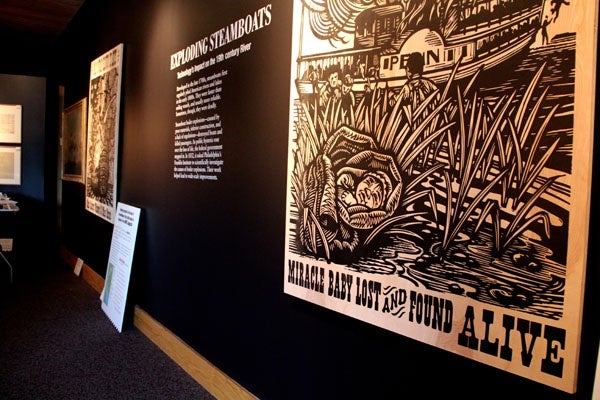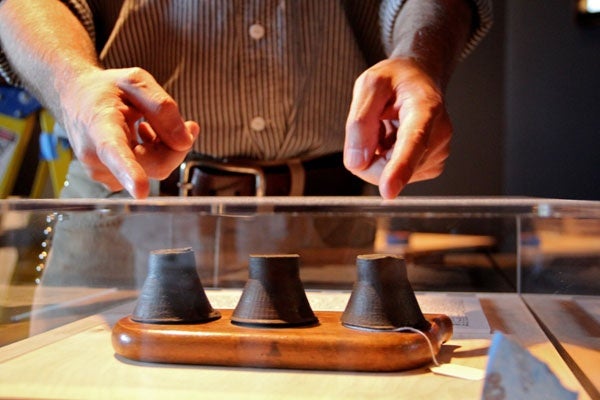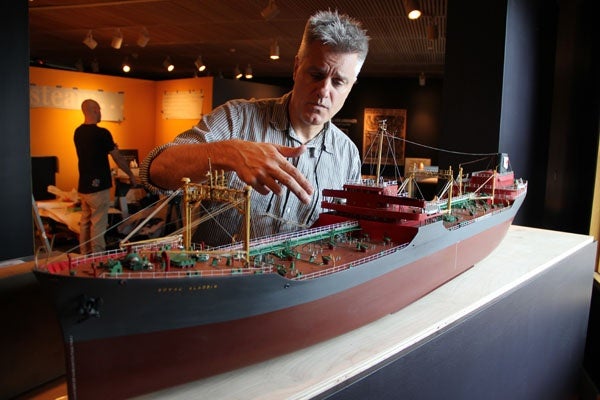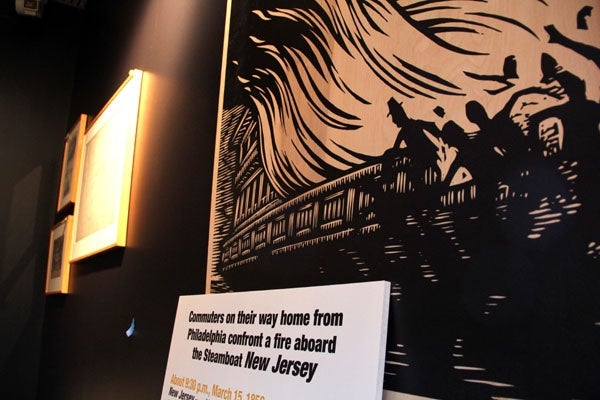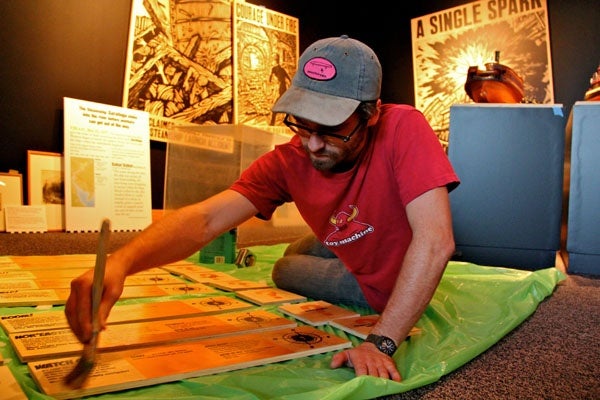Seaport Museum chronicles Delaware River disasters
The Independence Seaport Museum in Philadelphia is remembering the long and lurid history of disasters on the Delaware River.
Here’s a sample:
1777: Revolutionary soldiers fired on a British warship and hit its powder magazine. The resulting explosion shattered windows for 16 miles.
1901: The boiler powering a passenger steamboat headed toward Trenton exploded. Survivors clung to a floating piano.
1975: Two oil tankers collided near Marcus Hook. The resulting fire was so intense, the steel plates of the hulled popped, launching their rivets like bullets.
“I would read these stories, and there were no artifacts, just the stories. I needed someone to illustrate them,” said Craig Bruns, curator at the Seaport Museum. “Bingo! I knew who.”
Bruns commissioned the Brooklyn-based printmakers Cannonball Press to make original woodcuts inspired by the sensationalistic newspaper accounts of these nautical disasters, complete with banner headlines such as “HELLISH COMMUTE” and “CRUDE AWAKENING.”
Twelve of these large-scale prints in the style of 19th-century tabloids describe the arc of “Disasters of the Delaware: Rescues on the River,” now on view at the Seaport Museum.
The show’s more sober subtitle points to the underlying theme of the exhibition, tracing the evolution of river management. Modern maritime regulations and rescue procedures were developed in reaction to tragic accidents on the water.
“A disaster might result in a lighthouse getting built, or a rule change so ships can pass each other more safely,” said Seaport CEO John Brady. “How we navigate the river today has been strongly influenced by these untoward incidents.”
The timeline of the exhibition ranges from a 1774 nor’easter that sank a cargo ship, up to the 1975 oil spill in Marcus Hook. It does not include recent disasters, such as the sinking of a duck boat in 2010 that killed two tourists.
“There’s this thing about disasters where there’s respect for what happened, and for the dead, and we didn’t want to weigh in on that,” said Brady. “We’re not about sensationalism, despite what you see on the walls. We’re about recording this historic sequence of events.”
The exhibition includes profiles of those who currently patrol the Delaware River, including members of the fire department, the Coast Guard, and the U.S. Army Corps of Engineers.
WHYY is your source for fact-based, in-depth journalism and information. As a nonprofit organization, we rely on financial support from readers like you. Please give today.




